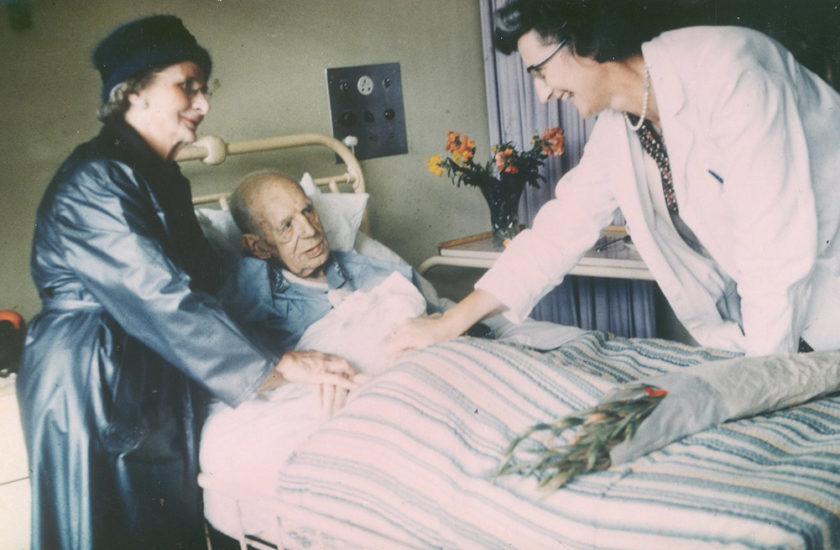By Anna Grande, Communications & Marketing Intern
When exploring the origins of hospice care, one might come up with several different answers. There is evidence of “hospice” care dating back to the 11th century, if not even earlier. This type of comfort care was present during the Crusades, when all along the routes to and from Jerusalem, there were places where injured, tired or dying men could spend time and be cared for.
During the Middle Ages, “hospices” developed as a part of the Monastic Reform and as places to house the sick and dying. More evidence of hospice care can be found in the 17th century through the work of St. Vincent de Paul and St. Louise de Marillac and the Daughters of Charity and the Congregation of the Mission.
In the late 1800s and early 1900s, there was a need for comfort for those who were “incurable,” and the movement for hospice care emerged in London, Australia and New York City. While tuberculous and other terminal illnesses at the time were rapidly spreading, patients were unable to stay in hospitals. Throughout these difficult times and despite a lack of modern medical science and understanding of terminal conditions, the need for end-of-life comfort and specialized care was recognized and met.
The care that evolved through the centuries generated the groundwork for the modern philosophy and best practices of hospice and palliative care. The modern approach and methodology developed in the 1960s through a physician in England. After volunteering at St. Luke’s Home for the Dying Poor, Cicely Saunders realized that she could be more beneficial to people with terminal illnesses by going to medical school and becoming a doctor. Saunders introduced the idea of benefiting her patients through care and not cure, and she emphasized the importance of shifting attention away from the disease and instead focusing care, comfort and support on the patient.
Dr. Saunders conducted tours to introduce her new philosophies to medical students in the United States in 1963, teaching the concept of “total pain.” This idea states that pain is not just a physical sensation, especially with someone who is dying as they experience pain socially, spiritually and mentally. Dr. Saunders compared terminal illness and chronic pain as a patient being held captive. She recognized the psychological toll that this kind of illness was taking on her patients, and her idea of hospice care was formulated. As much as finding physical comfort for her patients was a necessity, so was their emotional comfort.
While in America, she gave a talk at Yale’s School of Nursing and Medicine, where the dean, Florence Wald, was inspired by her philosophy. Wald ended up taking a leave from the school to visit England with Dr. Saunders to learn firsthand what this new way of terminal illness care was like.
In July 1967, St. Christopher’s Hospice in England admitted its first patient. A year later, Wald returned to the UK to work with Dr. Saunders to learn more about hospice care. By 1974, Wald was ready to bring the first hospice care facility to America, and with assistance from a chaplain and two pediatricians, Connecticut Hospice opened.
In the ensuing 47 years, more than 4,600 hospices have been established in the United States, and it all started with a young nurse in the 1960s who wished for people to be able to die with dignity, peace and comfort.
Niagara Hospice became one of those organizations when it cared for its first patient in June 1988. To learn more about the key dates in the 33 years of hospice care in Niagara County, click here.
Bibliography:
- Dame Cicely Saunders. (n.d.). Retrieved from https://www.stchristophers.org.uk/about/damecicelysaunders.
- History of Hospice . (2018). Retrieved from https://www.nhpco.org/hospice-care-overview/history-of-hospice/.
- Our History . (n.d.). Retrieved from https://www.stchristophers.org.uk/about/history.
- Roberts, N. F. (2018, June 22). The History of Hospice: A Different Kind of Health Care. Retrieved from https://www.forbes.com/sites/nicolefisher/2018/06/22/the-history-of-hospice-a-different-kind-of-health-care/?sh=a19e949660ce.
- The Origin of Hospice. (n.d.). Retrieved from https://www.goodshepherdnc.org/origin-of-hospice.

